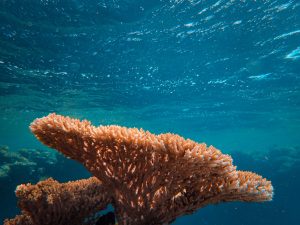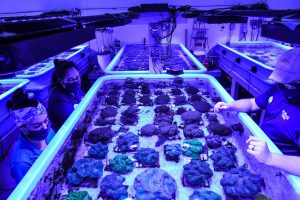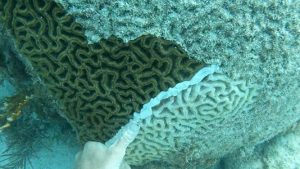Since 2014, Marine biologists have been working to stop disease from completely destroying coral reefs along coastlines. Their efforts are focused on maintaining and restoring what’s left of the coral reef through gene testing and lab growth.

Coral reefs are underwater structures that are made up of thousands of tiny skeletons called polyps. These structures extract calcium carbonate which builds up to create this harder outer shell that not only protects them, but also the coasts that they are on from erosion. Coral reefs are located from the Aleutian Islands off the coast of Alaska to tropical waters of the Caribbean Sea.
Stony Coral Tissue Loss Disease (SCTLD) is the most prevalent danger to coral reefs today, with its first appearance in 2014. According to Georgina Quach and Oren Gruenbaum of The Guardian, SCTLD is responsible for destroying nearly half of stony coral species in Florida. The mortality rate is “unusually high” with “the 30 or so coral species most susceptible to it.”
Thierry M. Work, a wildlife disease specialist, explains in a report that as a result of SCTLD, lesions appear on the exterior surface of the coral’s shell and they break down the soft tissue inside of them. In addition, once one coral is infected, the probability that other corals will also get infected greatly increases due to its contagiousness. Then, if they aren’t treated, the infected coral reefs will quickly die off. Quach and Gruenbaum reveal that nearly “half of stony coral species in Florida have died off,” due to SCTLD.

According to a study done by researchers at Nova Southeastern University, Antibiotic paste made up of amoxicillin has been the most effective way to treat SCTLD in live corals. But, in order to make up for the amount of corals that have died off, scientists are now growing coral reefs within labs using samples of live uninfected corals. Simultaneously, these coral reefs are being studied through gene sequencing to understand more about how SCTLD starts, how it affects the reefs, and what other factors are affecting the quality of the ecosystem.

Other factors that affect the quality of coral reefs are climate change, harvesting, tourism, and natural disasters. According to a presentation at the Ocean Sciences Meeting in San Diego, California, “more than 90% [of coral reefs] are expected to die by 2050.” But through treatment, studies, and the manual reproduction of coral reefs, the ecosystem’s fate is greatly protected.
If you enjoyed this article, check more out at: https://nstem.org/stage/blog/.
Written By: Kathryn Cottingham
October 26, 2021

